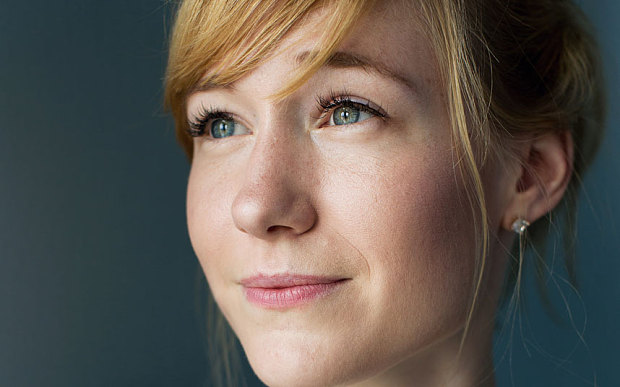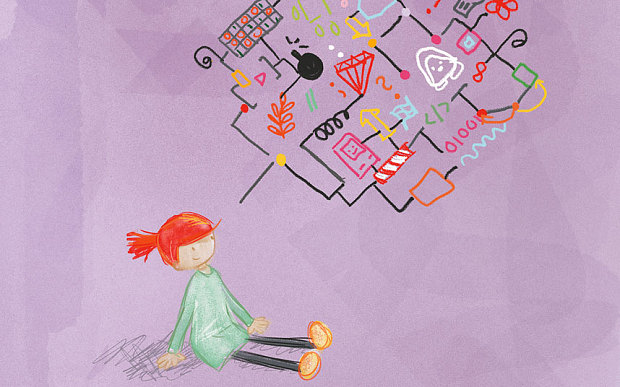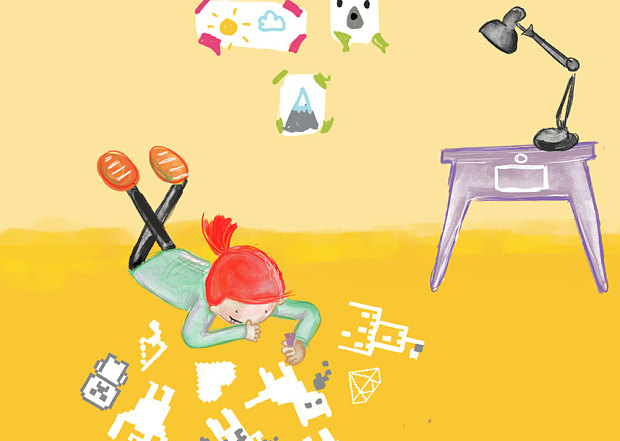Why do women make good programmers

Linda Liukas independently learned programming to create a site dedicated to Al Gore
It is unlikely that you would have guessed that a miniature blonde 26-year-old girl would be one of the most talented programmers. But Linda Liukas from Helsinki (Finland) describes herself as a person who likes to cook, run, a person who has “too many children's books” - and at the same time she is like that. She participated in the creation of a global initiative to attract women to programming, operating in 227 countries, and has already written and illustrated a series of books teaching children about programming. “Women make good programmers because they are creative people and at the same time know how to communicate well,” she explains to me at a meeting at a technology conference in London.
Liukas, sociable and charming, is considered a talented programmer who rediscovered writing code as a visual and creative art. She was one of the first employees of the Codecademy site, which received an investment of $ 10 million, and offered free programming lessons. Then in 2010, she became the face of the non-profit organization Rails Girls , which teaches women how to create web applications.
')

The illustrations by Liukas "Hello Ruby" should stimulate children's interest in programming.
Rails Girls first was a weekend weekend study course for friends — she wanted to break the cover of secrets from programming by teaching everyone to use Ruby on Rails. “This tool allows you to create something visual and real, and very quickly,” says Liukas. - It's fine". Lessons from Rails Girls were not only online, but also in real life. A volunteer organization already includes 10,000 women between the ages of 11 and 65 all over the world, in countries from Germany to Mozambique. “Ordinary people who do not communicate with the programmer community believe that the code is written by computers for computers, but this is not so,” she says. - The code is written by people for people. This is a very human thing. ”
Liukas grew up in Helsinki, and lives there with her boyfriend. Her father is a financial director, her mother worked in the central chamber of commerce. At 13, in 2001, she decided to create a website dedicated to her idol. “And it was not Orlando Bloom,” she laughs.

“I was crazy about Al Gore! He was an outsider to the presidential race. He was not as polite as Bush, but he was very interested in the environment. ” She googled everything about Gore and decided to make him a digital place of worship. “I had to learn to program from scratch. But I learned that I can create something from nothing, and for that I need nothing but words. I remember the feeling when I realized that I could get the computer to do everything that I needed. ”
Then the programming lessons were too simple and were performed without imagination. “I studied two hours a week. It was not very fast, and I was one of only three girls in a class of 30 people. ” Liukas recalls how the teacher asked her to draw a teddy bear in Java. “I was upset because I could draw a bear by hand or in photoshop much better than with the help of code. The teacher did not explain that it was useful if it were necessary to draw 1000 bears or 200 bears of different colors. We were given no context. ” She says that she had to spend almost 10 years on learning the basics.
Her parents were economists and encouraged her to do the same, although she liked more to do visual journalism. At Aalto University (Helsinki), students were offered a year of study at Stanford University, and Liukas went there to study product design. There she signed up for programming lessons and discovered Ruby, the language that changed her career path. Created by Yukihiro Matsumoto in 1993, Liukas liked the “deeply humane” language, and she began to impart human traits to the code. "When I had difficulties, I imagined that I explained them to a six-year-old girl named Ruby, and I drew explanatory pictures."
She posted her drawings on Tumblr, and people began to ask what Ruby would do next, and some even advised her to create a whole book for children. With great excitement, Linda began writing and drawing her first draft. “Hello Ruby” is a technology and programming book in which a clever playful red-haired girl loses her collection of magical gems and sets off to return them. Along the way, Ruby joins forces with a lonely snow leopard, a group of talkative androids, a fiery fox, a organizing party and a wise penguin.
To finance the publication of her book, Linda organized a crowdfunding campaign on Kickstarter in January last year. “I asked for $ 10,000, which should have covered the first 500 books. For 24 hours, we scored more than $ 100,000. By the end of the campaign, we received $ 380,000. It completely changed my life. ”
When her campaign became famous, Macmillan offered Linde a contract to create a series of books in the United States. Her editor helped expand her story - now she is three times longer, and an additional exercise book is attached to it. In the UK, she is waiting for another contract. While the project is delayed due to the rewriting of the book, but Linda says that her backers understand everything, and she keeps them informed with the help of her blog, where she also places exercises that can be performed with children.

She attributes the success of the campaign to the fact that "there are so many dads and mothers who would like to acquaint their children with the world of programming, but did not know how." Perhaps the success of Hello Ruby is tied to the growing need for programmers - they are no longer enough in the UK, where programming has been added to the basic training program.
It seems that the idea of a book on a digital theme looks rather strange - would it not be better in this case a mobile application? But Linda believes that children should not spend all their time in front of the screen. She wants children to spend more time thinking about how to use computers as tools to change the world. “I ask children to build computers from paper or to draw applications by hand. It's all about imagination. ”
Linda is working on future Ruby adventures. In recent years, a new YAP Julia has appeared in America, and it is gaining popularity. Linda wants to include it in her books. "Julia will be Ruby's friend."
I met Linda when she spoke at a Wired magazine conference. For the past few years, she was the youngest participant in such conferences, so she was very happy when a 13-year-old girl under the pseudonym CyFi stepped on the stage and told how she teaches people to be “good hackers” [white hat hackers] - who don't steal data and do not break the site, and look for vulnerabilities and warn owners about this. “I have to get used to the fact that I am no longer the youngest speaker,” smiles Linda. “This girl was just awesome.”
Linda regards the increase in the number of women programmers as the return of women to the technological sphere. “It's all fiction that men are better adapted to programming. Ada Lovelace was the first programmer. She was the daughter of Lord Byron and her mother was a mathematician. It is these roots, poetry and numbers that helped her create the first programming language. ”
Now in the US, 80% of programmers are men. Linda believes that they occupied this profession only after it became clear that she was highly paid and very creative.
In her opinion, the problem is that the software industry does not reflect the needs of society. “Over 20 years old guys solve their problems with girls or meeting friends, but the world is full of other problems,” she says.
Linda considers herself the crest of a wave that changes the essence of society. “In the 1970s, punk appeared and a whole generation grew up. Our generation is a generation of programs. One line of code can affect the lives of millions of people. "
Source: https://habr.com/ru/post/273999/
All Articles